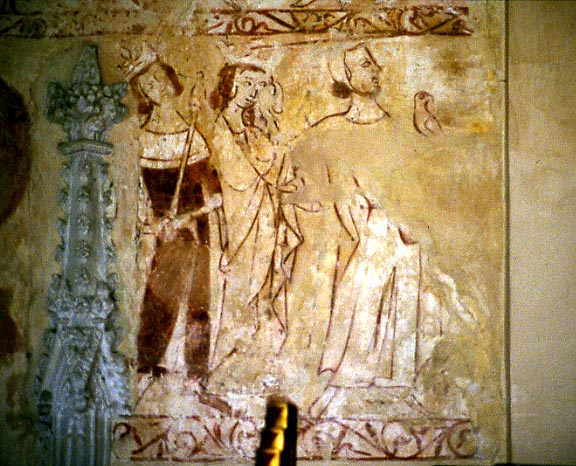Belchamp Walter, Essex (†Chelmsford) C.14
The Three Living & Three Dead

Only the living, a hawking party¹ as so often in English versions of the subject, now remain. The Three Dead were probably painted on an area of now replastered wall, shown in part at the right.
Two of these figures are crowned – the one at the left, with a sceptre is certainly a king – and, unusually, the central one may be, as she appears, a woman – her voluminous draperies look more like female than male garments, and there is no reason why a high-born lady should not be included in the party – falconry was a passion for many female aristocrats. Certainty is impossible though, and this might alternatively be a young prince. The third figure, at the right, has a close-fitting cap tied under the chin of the kind associated with medieval clerics and/or scholars. This man has a hawk on his hand, as perhaps the central figure also did once.
There are several other paintings at Belchamp Walter and one of the finest, the Virgin suckling the Christ Child, is newly on the site. All, including a rare example of the The Pelican in its Piety, more familiar in carved woodwork and stone or in manuscript illustrations, were under whitewash until fairly recently, but they will be here in due course.
¹In 1373 Edward III commanded ‘the sheriff of Oxfordshire to declare that all bridges should be repaired and all fords marked out with stakes for the crossing of the King “ with his falcons” during the approaching winter season’. (English Wayfaring Life in the Middle Ages, JJ Jusserand , trs. L. Toulmin Smith, Methuen, 1961, p. 42.)
† in page heading = Diocese